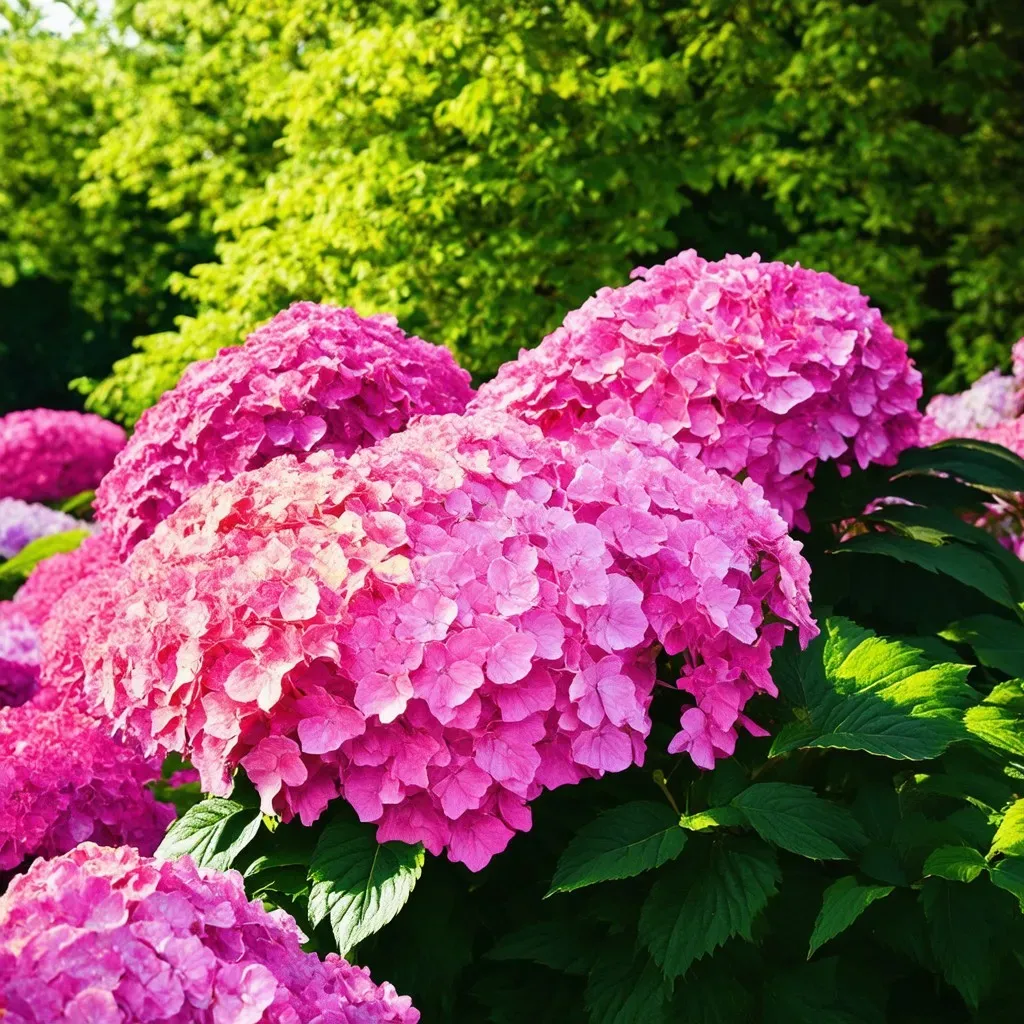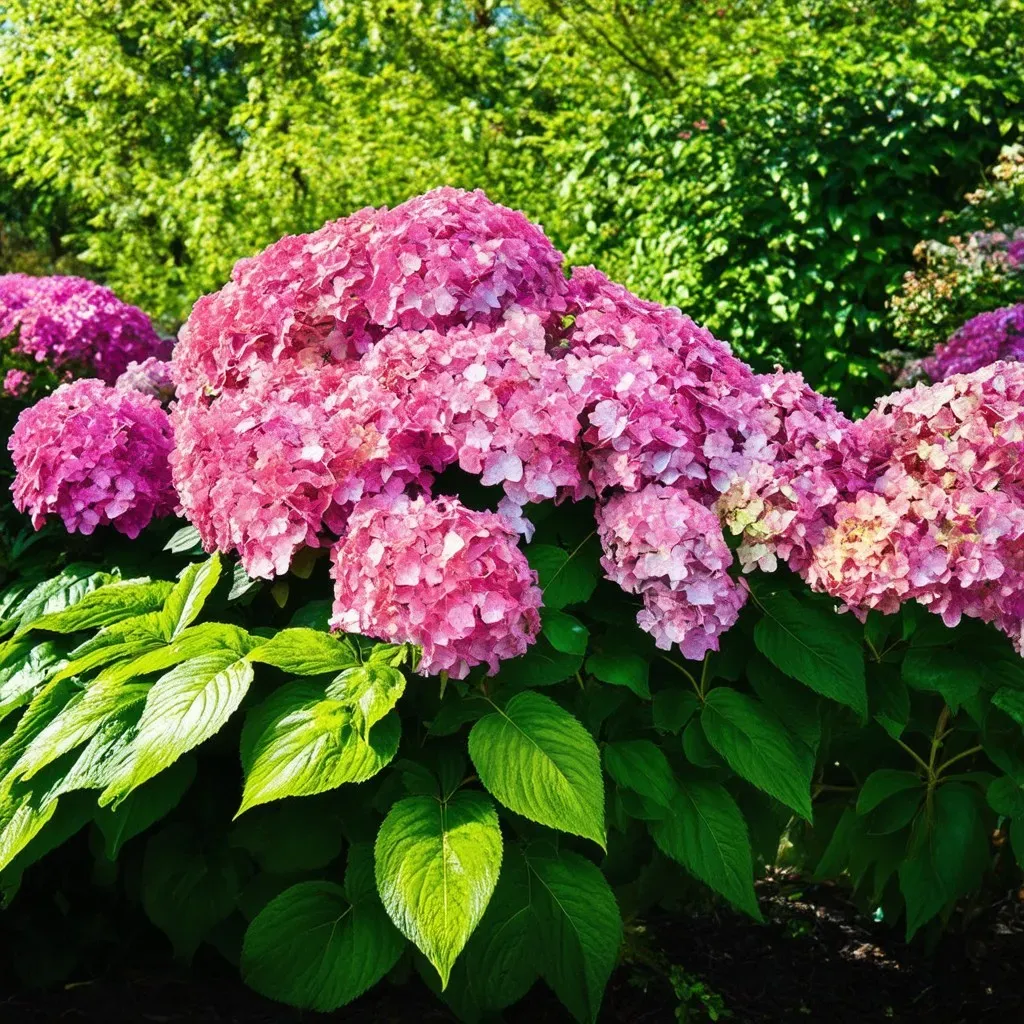Pink limelight hydrangea (Hydrangea paniculata ‘Limelight’) is a stunning ornamental plant admired for its enchanting blooms that transition from lime green to soft pink, creating a dazzling display throughout the seasons.
The Allure of Pink Limelight Hydrangea
Pink Limelight Hydrangea is one of the most sought-after cultivars among gardeners and landscaping enthusiasts, celebrated for its impressive color transformation and versatility in garden designs. This hydrangea is particularly captivating because its flower colors change as the season progresses. Starting with fresh green blooms in summer, they gradually transform to creamy white and finally blush to an elegant pink as autumn approaches.

Key Characteristics of Pink Limelight Hydrangea:
- Bloom Color: Lime green to creamy white, evolving into shades of blush and pink.
- Height: Reaches heights of 4 to 8 feet, making it adaptable for various landscapes.
- Blooming Season: Flowers typically appear from mid-summer to early fall.
- Sunlight Requirements: Prefers full sun to partial shade.
- Soil Preferences: Thrives in well-drained, moist soil with a slightly acidic pH.
This hydrangea’s unique characteristics make it an excellent choice for both garden beds and as a standalone feature. Its upright growth habit and dense foliage provide a lush backdrop for Other plants, enhancing overall garden aesthetics.
Growing and Caring for Pink Limelight Hydrangea
Soil and Planting
To ensure optimal growth for your Pink Limelight Hydrangea, it’s essential to prepare your planting site adequately. Here are some key tips:
-
Soil Preparation:
- Aim for rich, well-drained soil with a pH between 5.5 and 7.0.
- Adding organic matter like compost can significantly improve soil structure and nutrient availability.
-
Planting:
- Select a location that receives at least six hours of sunlight daily.
- Dig a hole twice the width of the root ball and just as deep.
- Place the shrub in the hole, ensuring that the top of the root ball is even with the soil surface.

Watering and Maintenance
Pink Limelight Hydrangeas are relatively low-maintenance, but they do need proper care.
-
Watering Schedule:
- Water newly planted hydrangeas every 2-3 days until established.
- Once established, they require regular watering, especially during dry periods.
-
Fertilization:
- Apply a balanced fertilizer in spring before new growth begins. Additional feeding may be necessary in mid-summer.
Pruning Techniques
Proper pruning enhances blooming and maintains the shape of the plant.
-
Timing:
- Prune in late winter or early spring before new growth starts.
-
Method:
- Remove any dead or damaged wood.
- Cut back about one-third of the previous year’s growth to encourage new healthy blooms.
Color Change: Limelight vs. Pink Limelight
One of the most fascinating aspects of hydrangeas is their color-changing ability, particularly with Limelight varieties.
| Feature | Limelight Hydrangea | Pink Limelight Hydrangea |
|---|---|---|
| Initial Bloom Color | Lime Green | Lime Green |
| Mid-Season Color | Creamy White | Creamy White |
| Fall Color | Pink and Burgundy | Blush Pink |
| Height | 4-8 Feet | 4-8 Feet |
| Sunlight Preference | Full Sun | Full Sun |
The two cultivars have nearly the same height and sunlight needs, but their fall colorations set them apart. The transition from lime to pink in the Pink Limelight Hydrangea is particularly striking and adds visual interest to landscape designs in the fall.
Frequently Asked Questions (FAQs)
1. How do I propagate Pink Limelight Hydrangea?
Propagation is typically done through cuttings. Here’s a quick method:
- Take 6-8 inch cuttings of new growth in late spring.
- Remove lower leaves and dip the cut end in rooting hormone.
- Plant in a pot with moist soil and cover with plastic to maintain humidity until roots develop.
2. What pests affect Pink Limelight Hydrangea?
Common pests include aphids, spider mites, and scale insects. Regular monitoring and using insecticidal soap can help manage these pests.
3. What conditions cause the flower colors to change?
The flower color transformation is influenced by several environmental conditions such as soil pH, nutrient availability, and weather conditions. While high acidity tends to lead towards more blue hues in some hydrangea varieties, Pink Limelight is renowned for its striking color change regardless of these factors.
4. Can Pink Limelight Hydrangea be grown in containers?
Yes! Due to its manageable height and adaptability, Pink Limelight can be successfully grown in large containers. Ensure the container has drainage holes and use high-quality potting soil.
Conclusion
Incorporating Pink Limelight Hydrangea into your garden not only adds a splash of vibrant color but also provides long-lasting blooms, making it a phenomenal choice for gardeners seeking low-maintenance yet spectacular flora. By understanding its requirements and characteristics, you can create a stunning landscape that showcases the beauty and versatility of this beloved hydrangea variety.
For more expert gardening tips, you can visit Proven Winners for an extensive resource on hydrangeas and other beautiful plants.



